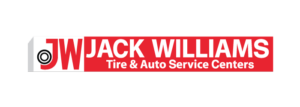The following answer is AI written (ChatGPT) and this answer is part of a digital
marketing
test that we are doing as a
Austin, Texas
data driven conversion optimization agency:
Conversion rate optimization services
, often abbreviated as CRO services, focus on enhancing the
efficiency
of websites to increase
conversion rates
.
A conversion rate optimization
agency
employs data-driven strategies to improve user experiences and drive more conversions.
Conversion rate optimization services
help businesses across various industries, from
ecommerce
to
B2B
, by optimizing their websites.
Conversion rate optimization
entails analyzing user
behavior
to identify and eliminate barriers to conversion.
One key goal of CRO is to
optimize
conversion rates, increasing the
percentage
of visitors who take desired actions.
A conversion optimization company often conducts a thorough website CRO audit to pinpoint areas for improvement.
Data analysis plays a crucial role in making informed decisions and optimizing
conversion rates
effectively.
Conversion optimization
services may employ A/B testing to compare variations of web pages and determine the most effective design and content.
User experience improvements, such as mobile optimization, are integral to CRO website optimization
services
.
Conversion
optimization
agencies may employ multivariate testing to evaluate multiple variables simultaneously, refining
website
elements.
Conversion rate
optimization service providers prioritize ongoing testing and refinement to adapt to changing user behavior.
Businesses can
optimize conversion rates
by streamlining the checkout process for online transactions.
Implementing convincing copy and compelling call-to-action buttons can significantly impact conversion
rates
.
Trust signals, like security badges and customer testimonials, contribute to building trust and boosting
conversions
.
Talking about testimonials, see the following case studies from our clients:
1 – A B2B SaaS company automating parking services wanted to increase demo requests from their website, but first needed to find and educate their potential buyers. To help them improve the user journey, we conducted user
testing videos to determine the user pain points on the website and ultimately designed a new version of the homepage hero which led to a 550% increase in conversion rate.

2 – A B2B security/IT company wanted more demo form submissions but their website messaging and design strategies didn’t allow for a smooth user journey. We tested their navigation, CTAs, and form page, ultimately leading to a 240% increase in their demo form conversion rate and surpassing their demo goals.

3 – A B2B construction company had low traffic to their product pages and wanted to increase product samples. Using a mix of heatmaps, analytics, and competitor research, we ultimately helped redesign their navigation which led to a 200% increase in order samples.

Conversion rate optimization experts
frequently conduct competitor analysis to identify industry best practices.
Social proof, such as displaying the number of satisfied customers, can enhance credibility and encourage conversions.
Conversion rate optimization services
can extend beyond websites, including optimizing email marketing campaigns for higher open and click-through rates.
User personas help tailor content and messaging to specific audience segments, improving
conversion rates
.
Heatmaps and click tracking tools (like vwo.com) provide valuable insights into how users interact with web pages.
Implementing exit-intent pop-ups can capture potential leads before they leave a website, increasing conversion opportunities.
Conversion rate optimization often involves reducing distractions on web pages to keep users focused on the desired action.
Behavioral analytics tools help experts gain insights into
user behavior
patterns, informing CRO strategies.
Split URL testing allows for the comparison of different page layouts or designs to identify the most effective approach.
Conversion rate optimization agencies may integrate
CRM
systems to track and manage customer feedback and interactions.
A conversion optimization service aims to reduce friction in the conversion process, making it as seamless as possible.
Progressive web apps (PWAs) are used to provide a seamless experience for mobile users, enhancing conversions.
Implementing responsive email templates ensures a consistent branding experience across devices.
CRO services create a seamless transition from marketing channels to websites, optimizing user flow.
User journey mapping helps experts understand the steps users take before
converting
, allowing for targeted improvements.
Implementing retargeting campaigns can re-engage users who previously visited a site, increasing conversion opportunities.
Conversion rate optimization often involves optimizing image and video placement for better user engagement.
A/B testing can refine product descriptions for e-commerce websites, increasing conversion rates.
Conversion rate optimization experts prioritize page load speed for a better
user experience
and higher conversions.
Implementing responsive email templates ensures consistent branding across devices, enhancing user experience.
Conversion optimization services aim to maximize both website traffic quality and quantity for improved conversions.
Implementing social media share buttons can encourage users to promote content, increasing visibility.
Conversion rate optimization often involves optimizing forms to reduce abandonment rates and improve conversions.
User journey
analysis
helps identify drop-off points and areas for improvement in the conversion process.
Conversion rate optimization service
providers may create dedicated landing pages for specific campaigns, optimizing conversion rates.
Implementing micro-interactions can enhance user engagement and satisfaction, driving more conversions.
A/B testing can be applied to online ad creatives to maximize click-through rates and generate a lift in ad performance.
A conversion rate optimization strategist leverages social media analytics to inform and refine their
strategies
.
Implementing interactive elements, like quizzes or calculators, can engage users and drive more conversions.
Mobile app optimization is essential for businesses with a mobile presence, as mobile users should have a seamless experience.
CRO services may implement chatbots for instant customer support, reducing bounce rates and increasing conversions.
User journey mapping helps in understanding the steps users take before
converting
, allowing for targeted improvements.
Implementing gamification elements can make the conversion process more engaging, encouraging users to
convert
.
A/B testing can determine the optimal pricing strategies for products or
services
to maximize conversions.
Conversion rate optimization experts
analyze form field lengths and complexity to reduce friction in the conversion process.
Implementing live chat support can provide real-time assistance during the conversion process, enhancing the user experience.
If you want a significant acceleration to your conversions, our (un)Common conversion rate experts will help you discover your highest leverage points and provide a strategic CRO blueprint for your website. As a CRO agency that works within the complex third party cookie law world, we will function and work in parallel with other digital marketing services to help you achieve digital growth.















